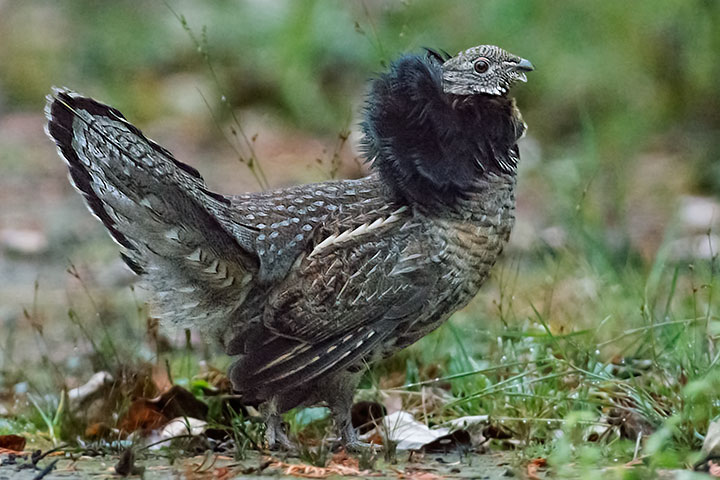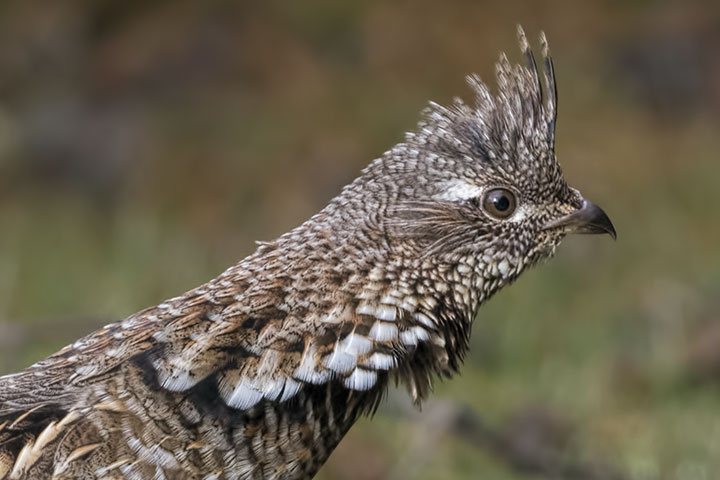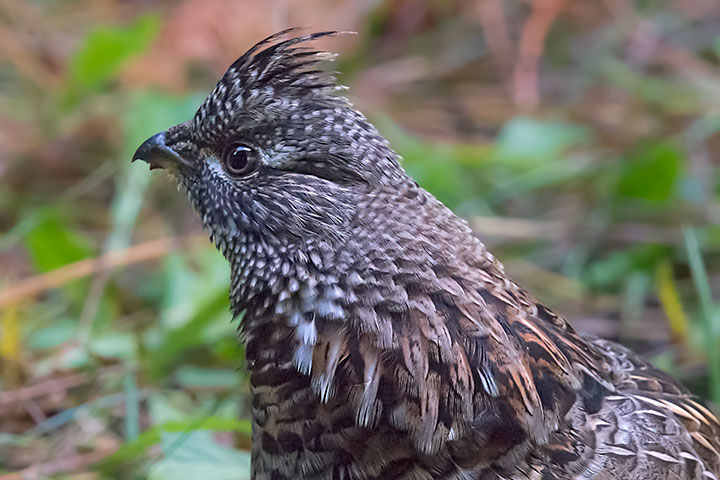For some time, I fancied that I had a residential Ruffed Grouse — or at least my yard lay within its limited range. Maybe it stuck around because it viewed my yard as a sanctuary.
Alas, reality has undercut both conceits. First to go was the matter of a safe haven when a neighbourhood dog executed the bird. Second, was the fact that the grouse continued to appear. Apparently, I was not observing a single bird, but a few of them.
Certainly, I had noticed that the colour of the grouse did not remain constant, but then the lighting varied, and besides all birds moult and sometimes can change their plumage in spectacular ways. The problem was that while the Ruffed Grouse moults, it retains the same look. Further, its breeding plumage is available at any time of the year merely by erecting its ruff and fanning its tail. The variations I was seeing were not a result of moulting.
It turned out that the Ruffed Grouse has two colour morphs (or phases), rufous and grey, where the frequency of each depends upon climate and habitat. We have both morphs here, and this simple fact made it clear that I was seeing more than one grouse in my yard.
The Ruffed Grouse has his display plumage available whenever he wishes to threaten another male or attract a female. He does not have to moult into it. (Oct. 10, 2014)

This is a rufous morph wandering through my yard. (Feb. 2, 2014)
And here is a grey morph seen yesterday. Ah well, I watch; I learn.


beautiful detail, thanks for sharing it with us. J.
Hi Alistair
You watch, as you say, and also you learn. But that’s not the end of it, not by a long shot.
More than anybody I know, you also enjoin the rest of us to pay attention to the living green world: the various pleasures and riches of so doing.
For my part, I hear you loud and clear…
Trevor